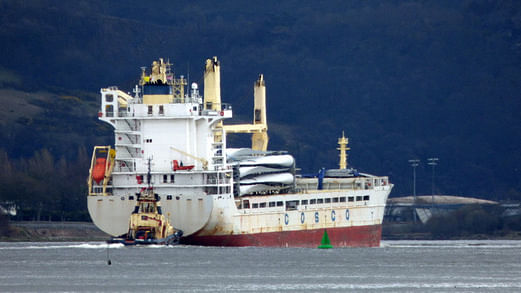New Delhi: A ship bearing the Hong Kong flag, headed to Port Qasim in Karachi was detained by Indian Customs on 3 February for mis-declaring an autoclave — a pressure chamber which can be used in the launch process of ballistic missiles — as an industrial dryer.
The Chinese ship, Dai Cui Yun, was detained at Gujarat’s Kandla port and the autoclave was seized, following which the ship was allowed to move towards its final destination.
A Hindustan Times report Wednesday revealed that the 18-metre-by-4 metre vessel can be used in the “manufacture of weapons of mass destruction (WMD) platforms”, according to officials from the Defence Research and Development Organisation (DRDO).
“The autoclave can be used for the manufacture of the motor of very long-range missiles, with range upwards of 1,500 kilometres or even in the construction of a motor for the launch of satellites. Pakistan has the Shaheen II missile in the 1,500-2,000 kilometre range, and the platform was tested last May,” the report quoted an official as saying.
The Shaheen-II missile is capable of carrying both conventional and nuclear warheads.
The Islamabad-based United Construction Company had imported the vessel and Hong Kong-based General Technology had booked the consignment, the report added.
ThePrint explains what an autoclave is and what it is used for.
Also read: Mystery Chinese ship to Karachi, 5 indicted in US show Pakistan’s nuclear racket is alive
What is an autoclave?
The most basic function of an autoclave is to provide a “physical method for disinfection and sterilisation”. A combination of steam, pressure, high temperature and time are used to kill microorganisms and spores. A temperature of 121 degrees Celsius, saturated steam under at least 15 psi of pressure, and 30 minutes, are prime conditions for the autoclave to be effective.
The general process of an autoclave can be broken down into three steps. First is the Purge Phase, where “steam flows through the steriliser, beginning the process of displacing the air; temperature and pressure ramp slightly to a continuous flow purge”.
This is followed by the Exposure Phase, where the “control system is programmed to close the exhaust valve causing the interior temperature and pressure to ramp up to the desired setpoint. The programme then maintains the desired temperature (dwells) until the desired time is reached.”
And finally, the Exhaust Phase, in which “pressure is released from the chamber through an exhaust valve and the interior is restored to ambient pressure, although contents remain relatively hot”.
Inflammable, reactive, corrosive, toxic or radioactive materials should not be used in an autoclave, while surgical instruments, glassware, pipette tips, media solutions and stainless steel, among other materials, are autoclave-compatible.
Also read: CPEC – China’s most ambitious project in Pakistan has become a corridor to nowhere
Uses of autoclave
The reason why the Chinese ship could pass off the autoclave as an “industrial dryer” is because the vessel is dual-use — it is employed for civilian as well as military purposes. For the latter, it is useful in the launch process of ballistic missiles.
It is also used in the sterilisation of waste products, vulcanising rubber (making it harder through the addition of sulphur), at food production facilities and more. The term “autoclave” is in fact synonymous with a steam steriliser that is most often found in hospitals or pharmaceutical settings.
Emerging trends
Given that an autoclave is a vessel that uses up a lot of water and the planet is going through a climate crisis, companies have begun moving towards autoclaves that are more sustainable in the resources they consume. Green autoclaves are crucial in that they either reduce the consumption of water from 1,500 gallons per day to just one gallon per day or fully recycle it.
Energy consumption can be monitored via control systems that automatically turn off the machine when not in use, “reducing energy consumption from as high as 80kWh per day down to 20kWh per day”.
Also read: This ‘Green Corridor’ in PoK will ease agricultural goods movement from Pakistan to China







Later, india will blame china for spreading Crona virus through this vessel
Smell the coffee, the blame is already placed